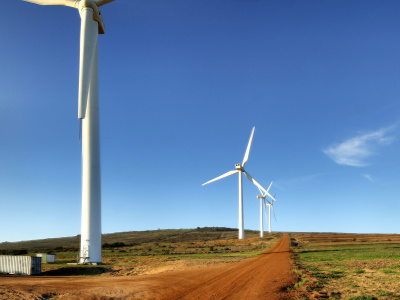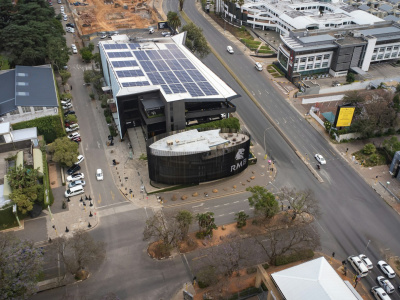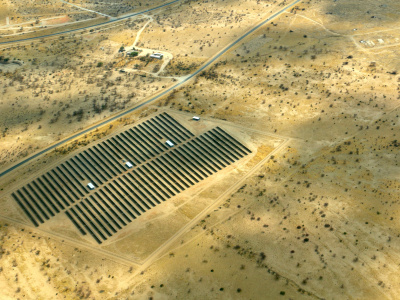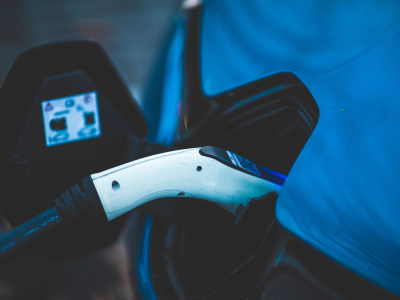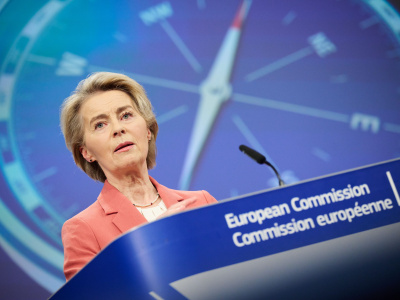
Green industrialisation in an age of disruption: Africa, Europe and the global economy
Alfonso Medinilla, Koen Dekeyser and Poorva Karkare highlight the findings of a multi-year research programme on the green industrialisation pathways of African economies within the evolving trade and geo-economic landscape, examining their connections to regional integration, international finance and global decarbonisation.
African countries seek to industrialise to drive growth, create jobs and strengthen value chains. If they can do so while gaining ground in the global green industrial race, all the better.
A new wave of African green industrial policies is emerging, with a continental call for climate positive growth and initiatives like the African Green Industrialisation Initiative (AGII) spearheaded by Kenya. African experts are calling for a green – and digital – industrial revolution to future-proof African economies and unlock the potential of the African Continental Free Trade Area (AfCFTA).
These initiatives seek to leverage African renewable energy and mineral assets not just for raw exports, but to break the commodity dependence and kickstart wider industrialisation by producing green goods and strengthening their position in clean technology value chains like EV batteries, iron and steel, fertilisers and renewable energy manufacturing. However, major challenges remain, including the risk of a green resource curse and unequal access to finance for both energy and industrial projects, which deepen production-based inequities.
All this is also unfolding in a highly volatile and competitive global environment. With the US acting as an agent of economic disruption, the EU – Africa’s largest trading partner – is looking to contain its dependence on the United States, while derisking supply chains from China, to maintain competitiveness of its industry and avoid deindustrialisation in Europe.
African countries do not want to get caught in the West-China rivalry, as both are crucial partners – China as Africa’s top trading partner and the EU as a key investor. This raises questions about their ability to turn geopolitical competition to their advantage.

Africa and the EU have distinct interests in green industries, which creates opportunities for cooperation. Europe's energy security and industrial competitiveness depend on decarbonisation and secure partnerships for green tech, while Africa's industrialisation relies on both regional and global markets and requires a fundamental shift in international finance for green energy and industry.
As part of a multi-year research programme, we explored the green industrialisation pathways of African economies within the evolving trade and geo-economic landscape, examining their connections to regional integration, international finance and global decarbonisation. This page highlights the findings from this research. We will continue delving further into these topics, so keep watching this space.
Explore this guide
- A new economic development paradigm for African green industrialisation
- European policy processes and African green industrialisation
- African hydrogen economies and European decarbonisation
- African critical raw materials and resource-based industrialisation
- EU-African industrial partnerships: A policy architecture fit for purpose
Europe's energy security and industrial competitiveness depend on decarbonisation and secure partnerships for green tech, while Africa's industrialisation relies on both regional and global markets and requires a fundamental shift in international finance for green energy and industry.
A new economic development paradigm for African green industrialisation
Environmental sustainability has emerged as a key factor of competitiveness challenging the "industrialise first, clean up later" approach, which may in fact lead to missed opportunities. Yet as African countries navigate ‘green’ and ‘development’ narratives, it is also clear that Africa’s green industrialisation cannot be framed purely in terms of decarbonisation – reducing emissions. African economies on average have contributed minimally to global historical emissions. Instead, the challenge is ensuring African industrialisation is economically viable in the long term.
Our research shows that going green adds complexity – and costs – to African industrialisation pathways. Yet not doing so entails risks – of fossil fuel lock-ins, sunk costs in outdated technologies in a context of declining global oil and gas demand, and missed opportunities in developing new markets and products, especially as trading partners increasingly shield their markets from embedded emissions – which could limit access for African industrial goods.
Many African countries are not locked into high-emission pathways and there are opportunities to leverage green technology (solar, wind, batteries), resources (minerals, energy), markets (AfCFTA, global demand) and capabilities (workforce, innovation hubs), to create a competitive advantage in (global and regional) green industrial value chains. For this, African economies need to proactively shape green industrialisation strategies to benefit from these ‘green windows of opportunity’. We categorise these in four key strategies:

These strategies, which are not mutually exclusive, provide a framework for understanding African green industrialisation ambitions. They consider the interplay of technical, political and diverse interests and capabilities within and between African countries.
Differing endowments and capabilities shape different pathways for green industrialisation. Morocco aims to become a net exporter of clean energy and products like hydrogen, ammonia and synthetic fuels, leveraging its solar, wind resources, proximity to Europe and existing industries. It is also attracting investment in electric vehicle (EV) and battery production. Kenya seeks to become a regional hub for low-carbon manufacturing, focusing on industries like electric motorbikes and buses, including for the regional market. South Africa is capitalising on its industrial base to promote high-tech battery manufacturing, leveraging manganese and vanadium, for different technologies.
Energy will remain central to these strategies, but Africa’s persistent energy challenges are complex and cannot be solved through techno-economic analysis alone. We explore how a political economy approach can help navigate these complexities and identify potential reforms with political support. Additionally, we examine the broader processes that influence and are influenced by these pathways for African countries.
Read more
European policy processes and African green industrialisation
Opportunities for African green industrialisation depend on leveraging global market trends (such as increasingly cheaper green technologies) and domestic resources (including minerals, markets and capabilities), but also on policy developments beyond the continent.
Europe’s push for supply chain resilience and decarbonisation, coupled with its clean energy shortages may offer a reliable offtake of green energy and energy-intensive products. Similarly, the increasing urgency to reduce overdependence on China for critical raw materials (CRMs) could enable investments in mineral processing in Africa to complement Europe’s re-entry into mining and refining.
The rising interest in Africa's CRMs is reflected in the growing focus on the Lobito Corridor, which provides an alternative export route by linking the copperbelt of the DRC and Zambia to the Angolan Atlantic port to avoid dependence on China. We assess how these geostrategic interests align with African economic development priorities
The fundamentally different economics of green energy (i.e. it is more economical to trade intermediate goods containing this energy, rather than the energy itself due to the high costs associated with its transport and trade) can create further opportunities. As Europe struggles with high electricity prices and competing demand on renewables, African countries can supply energy intensive products and molecules to the European market. With the right policies, the EU can help shape these interdependencies in a more secure and mutually beneficial way, proactively supporting green industrial development.
Yet EU policies can also pose challenges for African exporters. As the EU ramps up green subsidies to stay competitive, the stark contrast with the high risk premiums in developing markets becomes evident. Unequal access to capital undermines the commercial viability of green industrial projects in Africa, despite the continent’s strong potential. At the same time, EU subsidies risk inefficiently allocating scarce public resources to green industries in Europe, where energy potential is lower—ultimately creating a lose-lose scenario.
In this context, we show how the EU’s unilateral trade measures like the Carbon Border Adjustment Mechanism (CBAM), which imposes a carbon price on imports to curb carbon leakage, can further complicate these opportunities and are often perceived as limiting the policy space for African countries. At the same time, we also argue that the EU credibility in promoting a fair and green transition abroad hinges on its ability to promote green industrialisation.
Thus, while Africa stands to benefit from the global green transition, these opportunities exist within a landscape of entry barriers and shifting international dynamics. What may seem like clear-cut advantages can become more complex upon closer examination, as explored in our analyses of hydrogen for green steel and fertilisers, as well as the critical raw materials sector.
Read more
African hydrogen economies and European decarbonisation
Hydrogen is crucial for decarbonising energy-intensive industries such as iron and steel, for replacing fossil fuel-based feedstocks in processes like ammonia production for fertilisers, and as the basis for net-zero fuels (ammonia and e-fuels). Green hydrogen production requires immense renewable energy capacity which offers African nations a means to capitalise on their abundant renewable energy resources.
Several African countries hope to become hydrogen exporters. Morocco ,for example, claims the potential to meet more than 4% of global demand by 2030, while Egypt aims to capture up to 8% by 2050. Europe seems eager to buy: the EU has unveiled plans to import large volumes of hydrogen and its derivatives via Mediterranean pipelines and by sea from southern Africa and Latin America. Yet, as the initial hydrogen hype is receding, African countries will need more than mere potential to convert these opportunities into actual exports including industrial policies, reforming energy systems, market access through offtake agreements and regional cooperation, among other things.
European producers in energy-intensive industries like iron and steel face the challenge of transitioning from easily traded fossil fuels to hydrogen and renewable electricity, which are costly to transport. Importing industrial goods from North Africa, rather than hydrogen itself, could offer mutual benefits. However, this is not without tensions.

Relocation of production is politically sensitive, leading to fears of European deindustrialisation. Yet partial relocation – specifically of energy-intensive intermediary products – could help lower costs of producing steel and fertiliser in Europe, thereby boosting competitiveness. If managed well, partial relocation could increase African value addition while minimising European job losses. Relocation, however, would require partnerships and investments that build an interconnected green industrial geography across energy-intensive value chains.
Domestic and regional markets can play a key role in African hydrogen industries and mitigate some of the risks associated with a purely export-driven hydrogen economy. Green ammonia for nitrogen fertiliser production, for example, may offer a compelling long-term opportunity in Africa where fertiliser application is well below the global average.
Leveraging regional markets requires investments in improving transport linkages, logistics, building trade networks and facilitating trade, among many other things, at the regional level. Indeed, this is a key objective of the AfCFTA; we draw lessons from past experiences to inform the forward-looking AfCFTA strategy to promote industrialisation through regional value chains (RVCs).
Read more
African critical raw materials and resource-based industrialisation
Green transition minerals – or critical raw materials (CRMs) – are at the heart of most green industrialisation strategies in Africa. Yet converting these mineral riches into actual wealth is not straightforward. A closer look at the electric vehicle battery value chain reveals why.
Apart from the fact that there are limited investments in new mines, which takes several years, African countries also find themselves in a highly dynamic environment with battery chemistries fast evolving as firms race to cut costs and boost efficiency.
These dynamics influence both the supply and demand for minerals. The high energy requirements for refining and the economies of scale needed for midstream activities suggest that value chain development will not follow a simple linear path from mining to high-tech manufacturing. Instead, countries will enter at different points based on their industrial capabilities, workforce skills, market access, infrastructure and overall business environment. For example, the DRC and Zambia are focusing on refining, while Morocco is leveraging its automotive industry and trade agreements with the US and EU to attract Chinese and other investors in battery and electric vehicle production.
African countries see potential in the EU as a partner for their minerals, but Europe’s fragmented approach may undermine its appeal. In absence of rapidly scaling demand, it is also unclear whether its approach of technical assistance can compete with China’s strategy of providing competitive financing to acquire strategic mineral assets. African countries tap into the EU’s bid to counter China’s refining dominance to press for investment in local processing. But here too, EU investments are slow to pick up, as shown in our analysis seen in the development of the Lobito corridor.
Industrial policies will be key for any endeavours into the cleantech value chains. The newly approved Africa Green Minerals Strategy – a major milestone – calls for a regional approach to developing Africa’s mineral wealth. In practice, however, this has proved elusive. By contrast, countries seek greater value addition through ‘resource nationalism’, a controversial term with different perspectives: While those ‘from the outside looking in’ see its inefficiencies including unproductive rent seeking, those ‘from the inside looking out’ think it can alter the model of African countries as raw materials suppliers.
While countries see resource nationalism as a means to navigate West-China rivalries, not all are able to negotiate favourable deals. Angola struck deals with China, the US and the EU – with some calling it the Vietnam of Africa – similar to Morocco which is viewed as one of the five connector economies globally that are successfully navigating geopolitical rivalries through a mix of appropriate foreign and trade policy, and sufficient economic capabilities. In contrast, China is the only game in town for Zimbabwe.
Read more
EU-African industrial partnerships: A policy architecture fit for purpose
Across the African continent, countries are developing green industrial strategies that seek to break with historic patterns of extraction and instrumentalisation. This also requires a different industrial partnership between European and African countries, yet the path ahead is uneven. What emerges is a landscape filled with promise but also fraught with asymmetries – of power, finance and priorities. As Europe races to secure its own industrial future it must avoid prioritising inward-looking resource security and instead seek long-term partnerships. It should develop a policy architecture that is fit for value creation on both continents.
In less than four years, the EU has completely transformed its green industrial policies from a gradual decarbonisation agenda into an existential economic sovereignty and competitiveness agenda. Green energy is now the key to European energy security, and decoupling its energy system from Russian gas and LNG imports, while clean tech manufacturing is central to European efforts to regain a competitive edge in a more adverse global trading system.
European policy makers recognise that European decarbonisation and its clean tech manufacturing ambitions are interwoven with its neighbours and emerging economies. Yet there is a risk that an EU under pressure turns to an overly defensive and protectionist ‘Europe First’ approach by focusing only on electricity or hydrogen imports from the southern mediterranean, or CRM imports to derisk its industries from Chinese dominated supplies.
In this moment of disruption, Europe has a short window to strategically redraw its interdependencies with third countries, including in Africa, and build the foundations of an alternative green industrial geography, creating opportunities for value addition in Africa rather than reinforcing past extractive relations, while building on ongoing reforms and processes in Africa, including Just Energy Transition Partnerships.
European policymakers have been actively courting African partners, resulting in a patchwork of energy and climate partnerships – spanning CRMs, hydrogen, natural gas, just energy transition and Green Partnerships. Yet, initial results, e.g. in terms of mobilising finance or scale and speed of implementation of projects raises questions about the suitability of the EU’s existing toolbox for economic diplomacy for such partnerships.
New Clean Trade and Investment Partnerships – the first of which is being negotiated with South Africa – could be a key component of an upgraded economic diplomacy. They are an attempt to marry supply chain deals with regulatory alignment, technology cooperation and investments that link to “partners’ business needs and interests”.
The key is in recognising that external investments in industrialisation are compatible with European industrial competitiveness. Boosting African upstream processing (minerals) and midstream manufacturing (e.g. energy intensive industries) can not only secure supply for Europe, but also lower the costs of decarbonisation and open up new markets for clean tech and green industrial goods.
Yet effectiveness will ultimately be measured in outcomes, not intentions. To move from promise to practice, the EU should consider the following priorities:
-
Move from MoUs to concrete offtake and investment commitments: Shift from political signalling to commercially grounded agreements that provide predictability for partners and bankability for projects.
-
Do more with fewer countries: Focus on establishing secure, long-term partnerships with key African countries, demonstrating that EU external investment can drive economic transformation through green industrialisation.
-
Prioritise industrial cooperation in the Southern Mediterranean: Focus on North African countries as strategic hubs for green hydrogen, renewables and clean manufacturing, supported by trade facilitation and infrastructure investment.
-
Build a stronger EU interface for industrial finance: Mobilise private capital at scale, support European companies in setting up manufacturing in African countries, and take a more decisive approach to de-risking investments in critical green industrial sectors.





